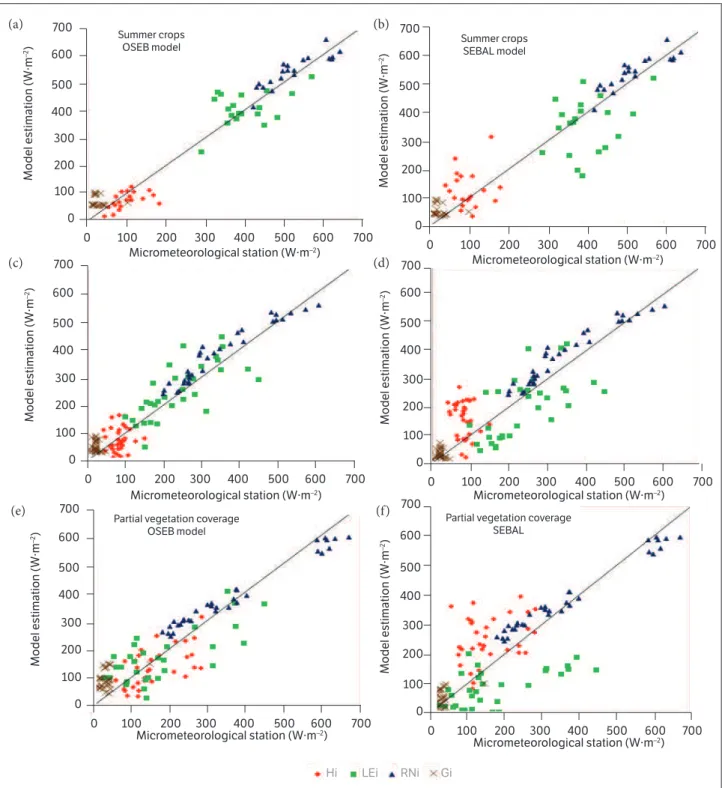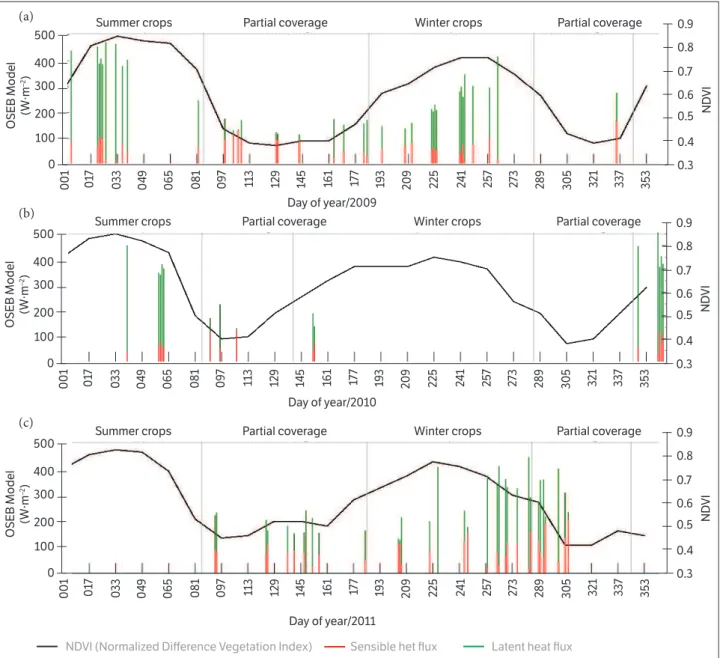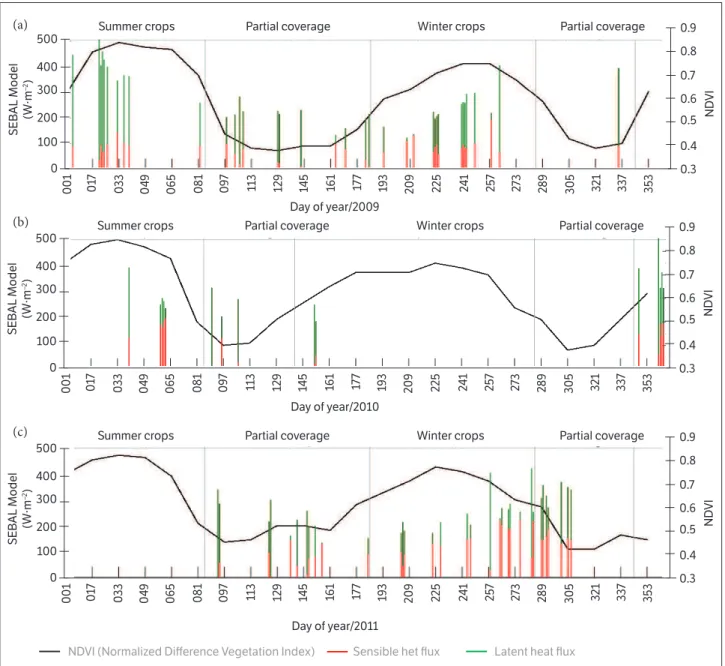Evaluation of OSEB and SEBAL models for energy balance of a crop area in a humid subtropical climate
Texto
Imagem
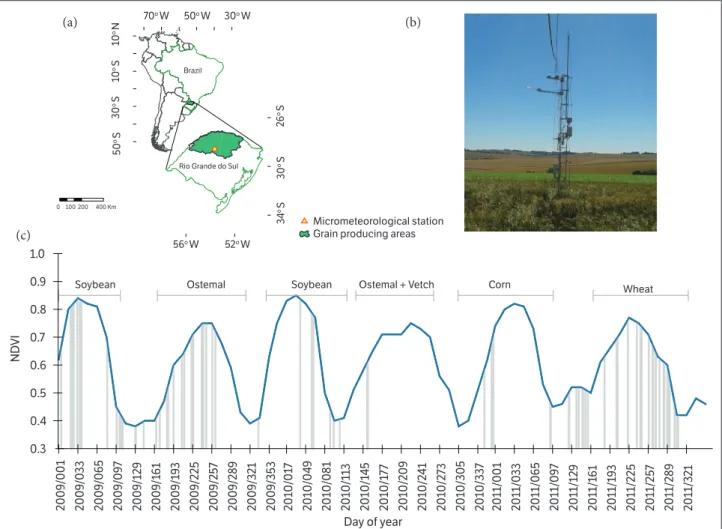


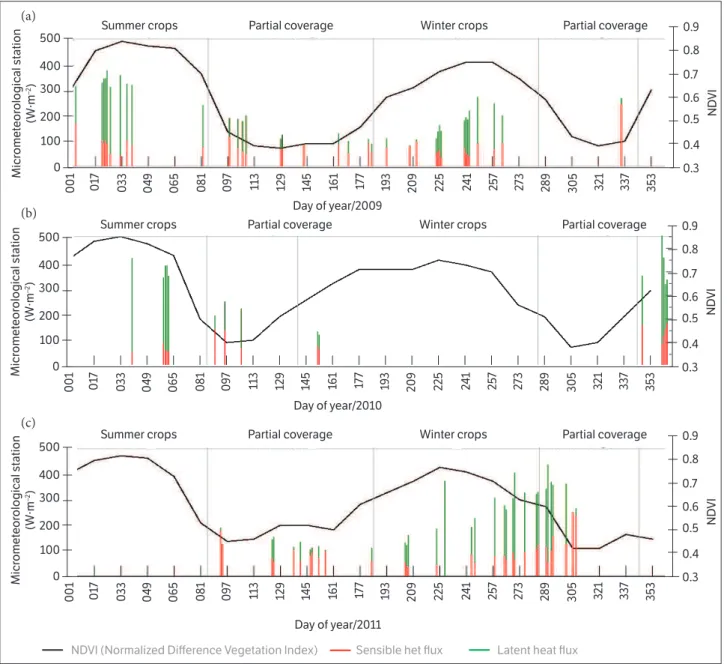
Documentos relacionados
The sensible and latent heat flux was calculated for daytime and nighttime using the monthly mean surface water temperature derived from MODIS data.. Due to the complexity of
The basic problem (4) for the arbitrary assumed value of boundary heat flux q ( x , t ) and the additional problems (20) associated with the sequential function specification
[27], the absorbing heat flux and releasing heat flux of the fifth endoreversible Carnot heat engine can be obtained by using the heat transfer between the working fluid and
The heat transfer coefficient increased with increasing heat flux and mass velocity, but strong heat flux dependence was observed, mainly in the lower vapor
Monthly sums of the measured ¯uxes (net radiation, Rn; sensible heat ¯ux; H; latent heat ¯ux LE; and ground heat ¯ux, G over the MUREX fal- low in 1995, 1996, and 1997 (note that LE
A comparison of surface energy balance fluxes in an urban area indicated the UCM re- produces a realistic partitioning of sensible heat and latent heat fluxes, consequently
of snow ablation including net solar radiation, turbulent flux exchange of sensible and latent heat and the e ff ect of local advection of sensible heat. We investigate the ap-
soil moisture, soil temperature, net radiation and heat fluxes (latent, sensible and ground heat fluxes) at land surface. Temperature and moisture of the surface 2.5 cm soil
